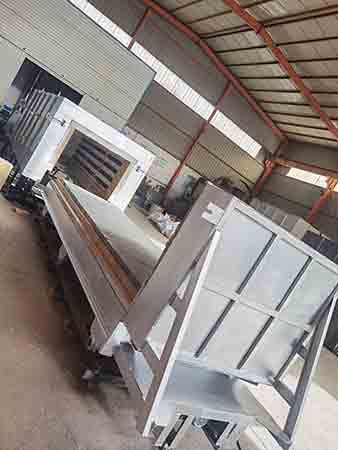Why does the car bottom furnace using silicon molybdenum rods as heating elements?
The use of silicon molybdenum rods (MoSi2) as heating elements in car-bottom furnaces is primarily due to their many excellent physical and chemical properties, making them an ideal choice for high-temperature industrial furnaces. Below are several key reasons:
High-Temperature Stability: Silicon molybdenum rods can operate at extremely high temperatures, with a maximum working temperature of up to 1800°C. This makes them highly suitable for heat treatment processes that require operation in high-temperature environments. Such high temperatures are essential for specific metal heat treatments, ceramic sintering, and other processes.
Rapid Heating Capability: Silicon molybdenum rods have a relatively low resistivity, meaning they can quickly reach the required operating temperature. This is critical for improving production efficiency.
Oxidation Resistance: The surface of silicon molybdenum rods naturally forms a dense layer of silicon dioxide (SiO2) protective film. This film effectively prevents further oxidation, allowing the rods to remain stable in high-temperature environments and extending their service life.
Corrosion Resistance: In addition to excellent oxidation resistance, silicon molybdenum rods also exhibit good resistance to most molten metals and glass. This makes them suitable for use in environments with certain corrosive atmospheres.
Variety in Size and Shape: Silicon molybdenum rods can be customized into various sizes and shapes according to different requirements, adapting to the structural design of different models and specifications of car-bottom furnaces. This increases their flexibility in use.

Ease of Installation and Maintenance: The design of silicon molybdenum rods takes into account the need for easy installation and replacement, reducing maintenance time and costs while enhancing the operability and cost-effectiveness of the equipment.
In summary, silicon molybdenum rods are widely used in car-bottom furnaces due to their exceptional high-temperature stability, rapid heating capability, oxidation resistance, and corrosion resistance. These characteristics not only meet the needs of high-temperature processing in industrial fields but also improve the reliability and efficiency of heating systems.
BAI KA Copyright © 2025 ALL rights reserved